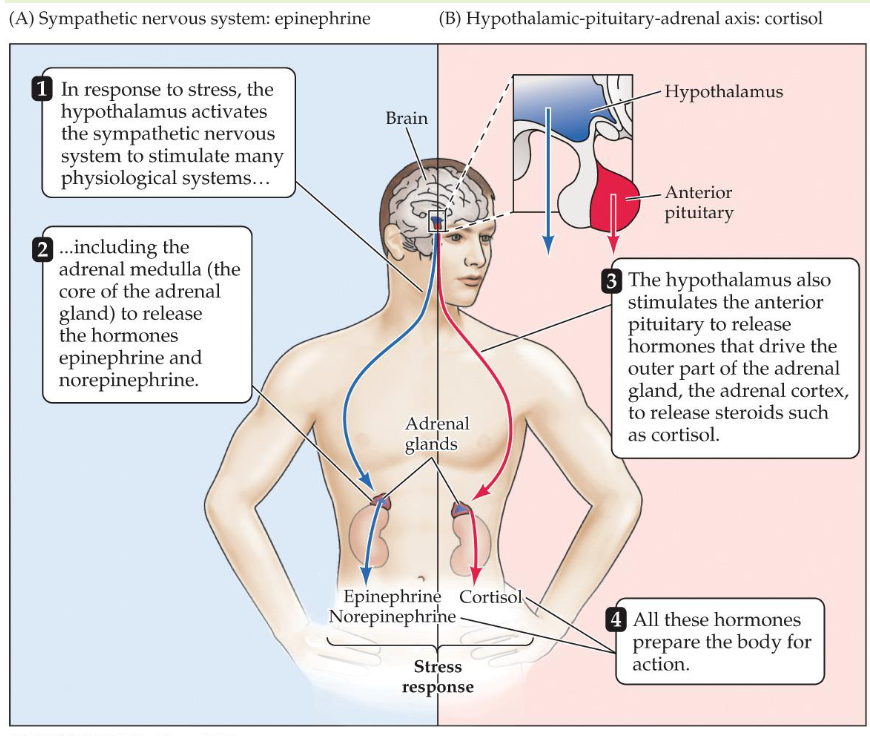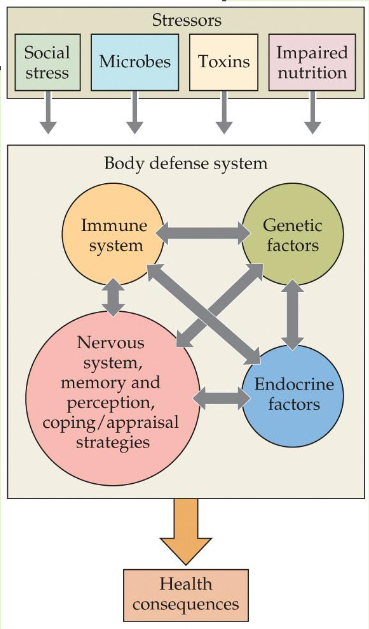Aggression & Stress
1/10
Earn XP
Description and Tags
Made by @agreyr
Name | Mastery | Learn | Test | Matching | Spaced |
|---|
No study sessions yet.
11 Terms
Aggression
Behavior intended to cause pain or harm
Hormonal contributions to aggression
Androgens seem to increase aggression in animals but story is more complicated in humans
Brain regions involved in aggression
Amygdala & ventromedial hypothalamus
Stress
The physiological changes that result when the body is exposed to harm or threat
Stressor
The experience that induces the stress response (bear, shock, exam, etc.); elicits the same response pattern whether psychological or physical stress
Stress pathways
Sympathetic nervous system (fight or flight, epinephrine) & HPA axis (stress hormone system, cortisol)

Hypothalamic-pituitary-adrenal (HPA) axis
Hypothalamus: Corticotropin Releasing Factor
Pituitary (anterior): Adrenocorticotropic Hormone
Adrenal gland: Cortisol
Hans Selye & stress research
Canadian physician who studied “ovarian extract” - injected rats daily with estrogen or control (saline) to investigate effects on stress
Results: ALL rats developed ulcers, enlarged adrenal glands, and shrinkage of the lymph nodes (stress response to injections)
Generalized Adaptation Syndrome
Three stage physiological stress response that appears regardless of the stressor that is encountered
Phase 1: Alarm reaction (mobilize resources)
Phase 2: Resistance (cope with stressor)
Phase 3: Exhaustion (reserves depleted)

Psychoneuroimmunology
Study of the interaction of psychological factors, the nervous system, and the immune system; includes biological factors

Stress and immune function
Acute stressors improve immune function; chronic stressors impair immune function
Brief stressors activate an inflammatory response (increased cytokines, peptide hormones that cause inflammation and fever)